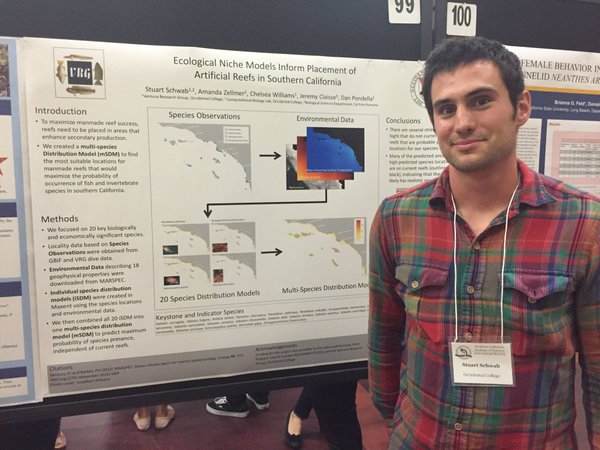
Maximizing artificial reef placement off the coast of California
Natural rocky reefs are highly productive and ecologically significant ecosystems off the coast of Southern California. These reefs support commercial and non-commercial fish and invertebrate species, and thus are currently a target of restoration and enhancement efforts. One type of enhancement is through the creation of artificial reefs. In order to maximize artificial reef success, efforts to artificially enhance our kelp forests may need to be focused. One such goal is to increase the stocks of commercial and recreational fish and invertebrate species. To begin to address this issue, we created an ecological niche model using distribution data and bioclimatic and geophysical GIS layers (MARSPEC) to predict the distribution of 32 keystone and economically important nearshore rocky reef associated species from Southern California. This model is independent of current kelp coverage. By creating this ecological niche model, we are able to to predict the most probable locations that fish and invertebrate species will thrive, thereby informing potential future artificial reef placement.
Poster Presentations: 2016 Southern California Academy of Sciences Annual Meeting
Publications: Predicting optimal sites for ecosystem restoration using stacked-species distribution modeling (Zellmer et al. 2019).
